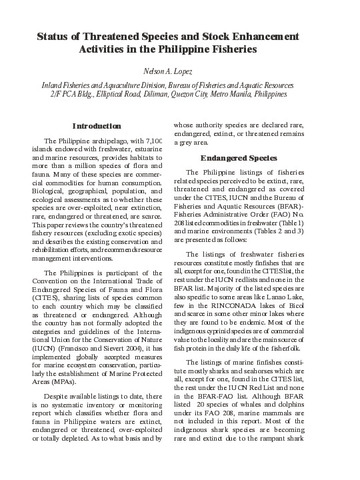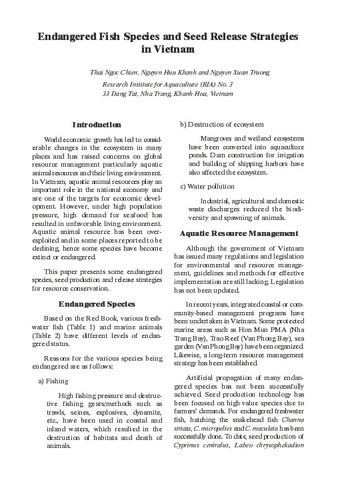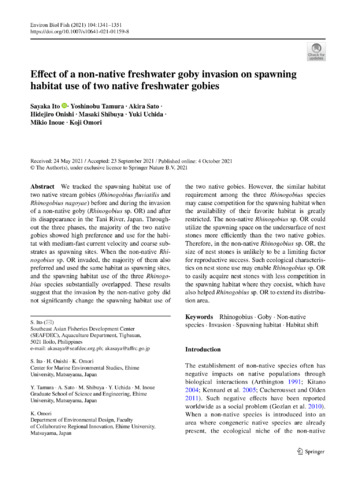| dc.contributor.author | Cuvin-Aralar, Maria Lourdes | |
| dc.contributor.editor | Biscarini, Chiara | |
| dc.contributor.editor | Pierleoni, Arnaldo | |
| dc.contributor.editor | Naselli-Flores, Luigi | |
| dc.coverage.spatial | Bay, Laguna de | en |
| dc.date.accessioned | 2015-05-08T07:55:30Z | |
| dc.date.available | 2015-05-08T07:55:30Z | |
| dc.date.issued | 2014 | |
| dc.identifier.citation | Cuvin-Aralar, M. L. A. (2014). Fish biodiversity and incidence of invasive fish species in an aquaculture and non-aquaculture site in Laguna de Bay, Philippines. In C. Biscarini, A. Pierleoni, & L. Naselli-Flores (Eds.), Lakes: The Mirrors of the Earth. Balancing Ecosystem and Human Wellbeing. Proceedings of the 15th World Lake Conference (Vol. 2, pp. 53-57). Italy: Science4Press. | en |
| dc.identifier.uri | http://hdl.handle.net/10862/2220 | |
| dc.description.abstract | Laguna de Bay is the Philippines' largest inland water with 900 km2 surface area. The lake has been assessed as hypereutrophic (Rohani and Roblo, 1984) to dystrophic (Barril and Tumlos, 2002). To make use of the lake's natural productivity a pilot aquaculture project started in 1971 (del Mendo and Gedney, 1979). The aquaculture industry in the lake rapidly developed, mainly using species not native to the lake. Since then, the lake has become a major source of fish in Metro Manila and the adjacent provinces.
An assessment of the impact of aquaculture in the lake showed increased total finfish biomass in the lake; ecotrophic efficiency of phytoplankton increased; and the calculated total net primary production decreased by a factor of two compared to the pre-aquaculture period (de los Reyes, 1993). The dominant species cultured in Laguna de Bay are introduced species. After more than 40 years the lake is now populated with non-native species including species that are considered invasive and nuisance. Many of these species were deliberately introduced for aquaculture and there are those that were considered accidental introductions like ornamental fish cultured in ponds within the lake's watershed.
To assess the impact of aquaculture in localized areas in the lake, a study was conducted to monitor diversity in the fisheries resources of the lake at two adjacent, but distinctly different sites: the West Cove (WC), an open fishery area, with no aquaculture and the East Cove (EC) which is an aquaculture site with cages for Nile tilapia, bighead carp, giant freshwater prawn. | en |
| dc.language.iso | en | en |
| dc.publisher | Science4Press | en |
| dc.subject | Philippines | en |
| dc.title | Fish biodiversity and incidence of invasive fish species in an aquaculture and non-aquaculture site in Laguna de Bay, Philippines | en |
| dc.type | Conference paper | en |
| dc.citation.spage | 53 | |
| dc.citation.epage | 57 | |
| dc.subject.asfa | species diversity | en |
| dc.subject.asfa | invasive species | en |
| dc.citation.conferenceTitle | Lakes: The Mirrors of the Earth. Balancing Ecosystem and Human Wellbeing | en |



